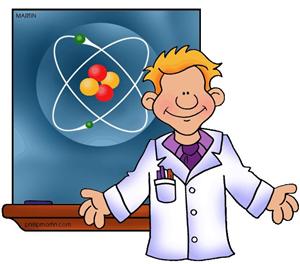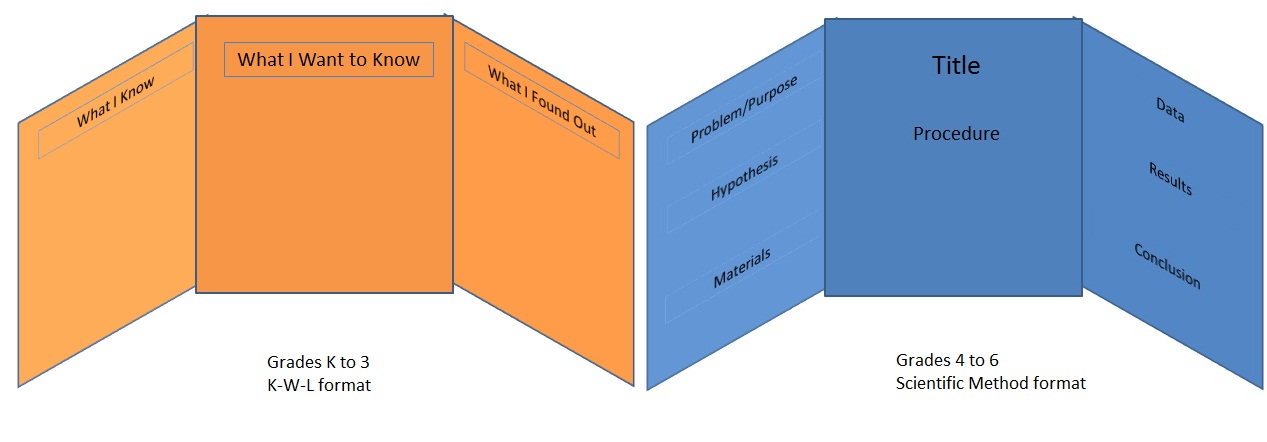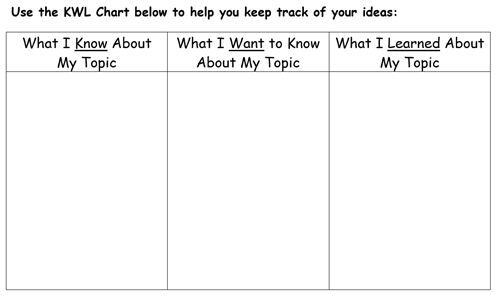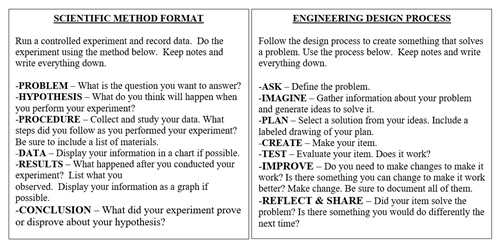-
Buckingham Science & Engineering Expo 2025
Resources Page Welcome to the Science Fair/Engineering Expo Resources Page. Here you will find some great ideas to help you with your project. One important thing to remember is that the reason of the Fair & Expo is to learn something new. You might think that an experiment to see if plants need water to survive will be easy, but you won't really learn something new since you probably already know the answer. However, you could modify this experiment so that you DO learning something new. For example, trying experimenting with different types of water (soapy water, salt water, bottled water, tap water) and see how each one affects plants. Now that would be more interesting! If you are creating an engineering project, you might already know how to build a strong bridge, but what about making modifications to it and see if it can be even stronger!Need an idea?If you're having trouble thinking of an idea, try visiting one of the following websites. They have tons of ideas to get you started.Science Buddies will help you find a topic by taking a survey.Need some inspiration?Did you know that Central Bucks has its own Science Channel on Youtube? Some CB teachers have worked to create a collection of science demonstration videos that you can watch. Check out some of the videos HERE.What does a Science Fair project look like?How your project will look depends on your grade level. For example, it's suggested that grades K through 3 use a K-W-L format, while grades 4 through 6 use the traditional Scientific Method format.
Welcome to the Science Fair/Engineering Expo Resources Page. Here you will find some great ideas to help you with your project. One important thing to remember is that the reason of the Fair & Expo is to learn something new. You might think that an experiment to see if plants need water to survive will be easy, but you won't really learn something new since you probably already know the answer. However, you could modify this experiment so that you DO learning something new. For example, trying experimenting with different types of water (soapy water, salt water, bottled water, tap water) and see how each one affects plants. Now that would be more interesting! If you are creating an engineering project, you might already know how to build a strong bridge, but what about making modifications to it and see if it can be even stronger!Need an idea?If you're having trouble thinking of an idea, try visiting one of the following websites. They have tons of ideas to get you started.Science Buddies will help you find a topic by taking a survey.Need some inspiration?Did you know that Central Bucks has its own Science Channel on Youtube? Some CB teachers have worked to create a collection of science demonstration videos that you can watch. Check out some of the videos HERE.What does a Science Fair project look like?How your project will look depends on your grade level. For example, it's suggested that grades K through 3 use a K-W-L format, while grades 4 through 6 use the traditional Scientific Method format. For Grades K-3:
For Grades K-3: For Grades 4-6:
For Grades 4-6:STEPS TO PREPARE A SCIENCE OR ENGINEERING PROJECT
1. Select a topic. The Internet (search Science Fair Projects or STEM Projects) and the library are great sources for ideas. There are also links on the school website. Remember: A Science Fair project is a test or investigation to find an answer to a question, not just to show what you know about something. What question do you want to know the answer to? An Engineering Project starts with a problem you want to solve. What is a problem that you would like to try to come up with a solution for?
2. Gather background information. Gather information about your topic from books, magazines, the Internet, and people with knowledge about the topic you are interested in. This also includes surveys! Keep notes of where you get your information.
3. Make a schedule. It takes time to research, buy supplies, and record information.
4. Construct an exhibit or display. It must be neat, but it does not have to be typed. Make it fun but be sure people can understand what you did. Tri-fold poster boards work well to display your information and help displayed data stand alone.
5. Experimentation, creativity, and discovery are encouraged.
6. Practice presenting it. Practice explaining your project to someone. YOU WILL HAVE AN OPPORTUNITY TO PRESENT YOUR PROJECT TO YOUR CLASS.
7. If your project doesn’t turn out the way you expect it to, it is still a project. We still want your project at the fair!
 Here are some more items to assist you:Mini Science Board Template -- This can be helpful for students in grades 4 to 6 who want to do a draft of their board and/or see how to set it up.Project Headliners -- You can print and use these title cards on your board.Project Label Page -- Tape or glue this page on the back of your board so it can be identified.What are the steps of the Scientific Method?Problem/Purpose -- Written in the form of a question. It tells what you are investigating.Hypothesis -- Your prediction. Tell what you believe will be the outcome of your experiment. It's okay if the experiment does not match your hypothesis.Materials -- List the items you need to carry out the experiment. Include the amounts.Procedure -- The steps you take to conduct the experiment. Number them in order and be specific enough so that someone can duplicate your experiment with ease.Data -- The information you collect. It is often recorded on a chart or tally.Results -- The findings of your experiment. It is displayed as a graph. Sometimes pictures can be used to show your results.Conclusion -- The final statement or outcome of your experiment. It should directly answer the problem question.
Here are some more items to assist you:Mini Science Board Template -- This can be helpful for students in grades 4 to 6 who want to do a draft of their board and/or see how to set it up.Project Headliners -- You can print and use these title cards on your board.Project Label Page -- Tape or glue this page on the back of your board so it can be identified.What are the steps of the Scientific Method?Problem/Purpose -- Written in the form of a question. It tells what you are investigating.Hypothesis -- Your prediction. Tell what you believe will be the outcome of your experiment. It's okay if the experiment does not match your hypothesis.Materials -- List the items you need to carry out the experiment. Include the amounts.Procedure -- The steps you take to conduct the experiment. Number them in order and be specific enough so that someone can duplicate your experiment with ease.Data -- The information you collect. It is often recorded on a chart or tally.Results -- The findings of your experiment. It is displayed as a graph. Sometimes pictures can be used to show your results.Conclusion -- The final statement or outcome of your experiment. It should directly answer the problem question.
Select a School...

